|
|
Advertisement:
|
|
Rainbow LED Fan |
|
Join the community - in the OCAU Forums!
|
Introduction, Package
Some fans arrived from CustomCases recently. Like many case accessories nowadays, they glow as well as cool. These take that idea a little bit further than other fans we've seen, though.

The fan actually comes in quite a nice retail box, a pleasant change from the plain cardboard or plastic sleeves most fans come in. There's a few extra goodies included:
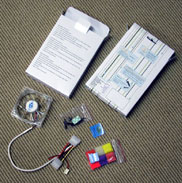 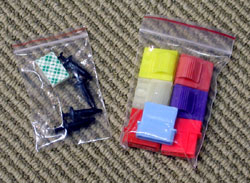
The box has instructions on the back, not that they're really required. You get the fan itself, some plastic mounting clip/screw assemblies and a stick-on cable clip to keep things tidy in your case. You also get a pretty cheap-looking case badge that I doubt many will use and a bag of replacement molex power connectors in a range of colours.
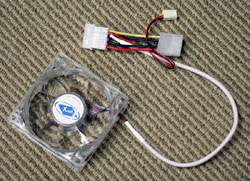
The fan itself is a standard-looking clear 80mm unit. As with earlier LED fans, there is conductive strip running around the body of the fan, carrying power to the three LEDs around the body. They rest in small tubes drilled into the fan body near the corners. You can barely notice them if the fan isn't powered. The cord from the fan to the power connectors is very flexible and nicely sheathed in a white rubbery material that is UV reactive. It will glow when illuminated with UV light, but the fan does not produce significant UV itself. The stock molex connectors are UV reactive also and I imagine at least some of the colourful extra ones are too.
It's worth noting that for power, this fan uses a normal molex passthrough with a 3-pin connector also. Pay attention to this 3-pin connector, because traditionally it would be used for RPM monitoring only, but in this case it is used for power only. The retail box for this fan says "3 pin connector for speed detection" but the yellow RPM-signal wire is not present on the connector, only the red +12V and black Ground wires. Therefore, plugging both the molex and the 3-pin connector into power sources at the same time is probably not wise, although I'll admit I absentmindedly plugged the 3-pin connector into a fanbus and connected the molex to power. The fan ran fine, without frying itself, the fanbus or the PSU. You should really only connect one or the other, though. The fan runs fine from either connector but there is no RPM monitoring available in either configuration.
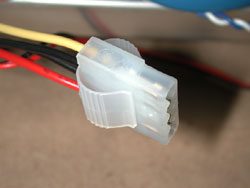
The female connector of the molex passthrough also has an interesting attachment to ease its disconnection from another plug. You squeeze some simple curved plastic "wings" on the plug and they slide forward, pushing the molex connectors apart. This also gives you a better grip than normal molex plugs. Unfortunately due to how the molex standard works, this is only on the least-used connector on the passthrough. Still, it's a great idea and I'd be very happy to see these appearing on PSU molex connectors - they'd certainly make it easier to remove power plugs from stubborn hard drives.
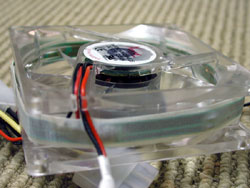
On other LED fans we've seen the conductive strip held in place with stickytape - not so on the rainbow LED fan, which has a much more professional finish. You can see the power wires going into a small half-moon circuitboard on the back of the fan body, then two more wires coming back out to the connecting strip. There is quite a wide gap on the back of the fan body and the motor windings are clearly exposed. Hopefully the airflow will carry dust past this gap and not gunk up the motor. There was no noticeable buildup after running the fan in my fairly dusty office for a few days.
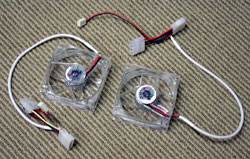
You might have noticed the back sticker on the motor has an oil stain. I actually received two fans from CustomCaeses, one in full retail packaging and the other an early pre-retail sample by itself. Both have oil stains on the back sticker, but I don't think this indicates a problem. If anything it shows this fan will be compatible with the old maintenance trick of peeling the back sticker off, dripping some light machine oil onto the axle then replacing the sticker. This simple maintenance can extend the life of a fan after it dries out and starts making bearing-grinding noises. This fan has sleeve bearings - purists will insist on ball bearing fans, but in reality a sleeve bearing runs quieter and will be fine provided the body of the fan isn't allowed to overheat. In a normal case-cooling situation they are fine.
|
|
Advertisement:
All original content copyright James Rolfe.
All rights reserved. No reproduction allowed without written permission.
Interested in advertising on OCAU? Contact us for info.
|

|


